This post is part of a series on how the creative arts — music, writing, dance/movement and visual — can improve your mental health, physical condition, and your spiritual and emotional well-being.
Over the past decade, psychologists have cautiously begun looking at how the arts might be used in a variety of ways to heal emotional injuries, increase understanding of oneself and others, develop a capacity for self-reflection, reduce symptoms, and alter behaviors and thinking patterns.
In addition to the psychological and emotional benefits, the latest research suggests a significant correlation between an improved mental state and a persons’ physical well-being. In this series, I have reviewed the research to explore how various art forms can improve your health overall.
Check out the God, Self & Soulmate category to read the other posts.
The theme for this year’s World Mental Health Day 2020 (on 10th October) is ‘mental health for all’. With the widespread impact of Covid-19 affecting people’s physical condition, mental health and emotional well-being in a myriad different ways, it is a message that has never been so relevant.
The Covid-19 Pandemic is making it difficult to improve your mental health
While the direct results of life in a state of near or total lockdown on ones’ mental health are clear and obvious, the continuing anxiety caused by the pandemic is just one of many dangers that have been on the rise since the start of 2020. In fact, some are more apparent than others.
Domestic violence is notoriously difficult for authorities to discover, prove and prevent — even at the best of times. During the Covid-19 lockdowns, both the frequency and severity of abuse has skyrocketed, with far-reaching effects not just for survivors themselves but also for children, other family or friends who witness the abuse.
In addition to increases in violence and anxiety, more adults in the US in April 2020 have admitted to feeling lonely than at any other time in the past two years. While not as shocking, that is still a worrying trend: the CDC has reported that adults who experience loneliness have a much higher chance of developing a number of severe mental and physical conditions.
While professional medical intervention is rightly upheld as the best approach to tackling such traumatic events, pandemic-related closures have put a strain on global public health services. As such, there has been a flood of recent studies exploring the benefits of various stay-at-home approaches to help improve your mental health, physical condition and/or your emotional well-being.
Studies suggest creativity and the arts represent a good stay-at-home approach to maintaining mental & emotional well-being
A good starting point is to recognize that ‘health’ is defined not just as the absence of disease or infirmity but, rather, as a state of complete physical, mental, and social well-being. Engaging in creative activities isn’t a panacea for all mental and physical ailments, but there is a widely-accepted argument that they can have both a very broad and very significant positive effect in terms of ‘getting healthy’.
Take two of the most prevalent global diseases — with some of the highest death rates — as examples. Cardiovascular disease is one of the leading global causes of death over the past century, while the incidence of diabetes continues to increase and now affects more than 100 million Americans. These disease groups have both been linked to psychosocial issues, such as depression and chronic stress.
Although the extent to which arts-based interventions can improve your health is still up for debate, there is a wealth of evidence to suggest that they can be effective in reducing adverse physiological and psychological symptoms. Specifically, engagement with artistic activities, either as an observer of the creative efforts of others or as an initiator of one’s own creative efforts, can enhance one’s moods, emotions, and other psychological states. In addition, it can also have a salient impact on important physiological parameters.
What the research makes clear is that just as marginal losses are at play when it comes to ones’ mental state affecting ones physical health, marginal gains can be similarly important at times when access to professional medical services is limited and/or restricted.
Engagement with creative activities can contribute to reducing stress and depression, which in turn can serve as a vehicle for alleviating the burden of chronic disease
Art and health have been at the center of human interest from the beginning of recorded history.
Music is the most accessible and most researched medium of art and healing. Much of this research has focused principally on the soothing capacity of music. In particular, music therapy has been shown to decrease anxiety and restore emotional balance. Beyond that, however, there are 5 primary areas in which music can improve your mental health — and potentially, as a result, your physical condition as well:
1. Music engagement can reduce anxiety
In a study of patients admitted to a coronary care unit with acute myocardial infarction — a cardiovascular condition — Cathie E. Guzzetta, editor of Essential Reading in Holstic Nursing, found that relaxation and music therapy were effective in reducing anxiety.
In the study, music was introduced into the private hospital rooms of 45 patients with myocardial infarction. After listening to relaxing music for 20 minutes, participants exhibited significant reductions in heart rate, respiratory rate, myocardial oxygen demand, and, in particular, anxiety, both immediately after and 1 hour after the intervention.
2. Music can reduce stress — on a chemical level
Music can calm neural activity in the brain and may help to restore effective functioning in the immune system, studies have shown.
A comprehensive report by UK-based Dr. R. L. Staricoff outlines a series of studies showing that patients with a variety of conditions displayed “a marked reduction” in cortisol levels when exposed to music. Cortisol is the hormone produced by the body that that is directly associated with stress.
3. Music can improve your mood — even in the bleakest of circumstances
An additional study sought to investigate the effects of group music therapy combined with other creative art methods on self-reported levels of anxiety, depression, and self-esteem among women who had experienced intimate partner violence.
Most participants reported that all of the interventions were helpful and rated the group therapy as a positive experience across most of the above-mentioned categories (excluding, interestingly, self-esteem, in which there was no significant change)
These findings suggest that active music therapy in a group context may be effective in improving ones’ overall mood — even among women recovering from serious interpersonal trauma.
4. Music can help to alleviate secondary pain from symptoms of severe illnesses
Numerous studies have been undertaken to explore the role of music in the control of chronic cancer pain. Five benefits of using music therapy with cancer patients have been reported in the literature:
1. increases in hospital patients’ sense of control,
2. promotion of wellness and the healthy aspects of patients’ lives,
3. reductions in pain and increases in immunity,
4. decreases in anxiety
5. and reductions in psychological and physical symptoms.
5. Music can help reduce depression in those suffering from chronic illness
In a study at the University of Florida, Dr. Edward Ross et al. observed the effects of various arts interventions on outpatients on long-term hemodialysis. Notably, patients exposed to live music by experienced artists reported substantial improvements in their self-assessed quality of life score over a six-month period.
In addition, their overall SF-36 symptom scores (designed to test for weight gain, serum carbon dioxide content, phosphate levels etc.) improved significantly — and the doctors overseeing the study attested to a trend toward reduced levels of depression.
Conclusions: Music engagement is well-documented means by which you can improve your mental health, emotional well-being — and even your physical condition
In spite of all the above-mentioned research, there is still an absence of comprehensive clinical research from which substantive conclusions can be drawn. As stated above, music in and of itself cannot be considered a cure — or even a totally proven aid — for serious physical or psychological conditions.
What we do know, however, is that there is *enough* evidence of its positive impact on vulnerable people for medical practitioners all over the world to pursue lengthy studies on the subject. What is more, many of those studies have demonstrated statistically significant positive results.
It has been suggested — by Stuckey, Nobel et. Al — that the “use of the arts in healing does not contradict the medical view in bringing emotional, somatic, artistic, and spiritual dimensions to learning. Rather, it complements the biomedical view by focusing on not only sickness and symptoms themselves but the holistic nature of the person.”
In other words, when people are invited to engage with creative and artistic processes that affect their identity beyond their worries, unhappiness, or illness, they are more able to “create congruence between their affective states and their conceptual sense making.” (quote: Yorks & Kasl via Stuckey & Nobel).
The act of playing or listening to music can help even those suffering with severe mental and/or physical trauma to re-discover their sense of self by reducing and alleviating psychological and physiological triggers pertaining to stress, anxiety, depression and more. Through that process, it seems, a powerful process of self-healing can be initiated which, in tandem with professional medical intervention, can have remarkable results.
N.B: I have referenced them frequently above but I would like to give a special credit to Heather L. Stuckey, DEd and Jeremy Nobel, MD, MPH as the inspiration and primary source material for this post. I am indebted to their fantastic research, which you can read in full here.



